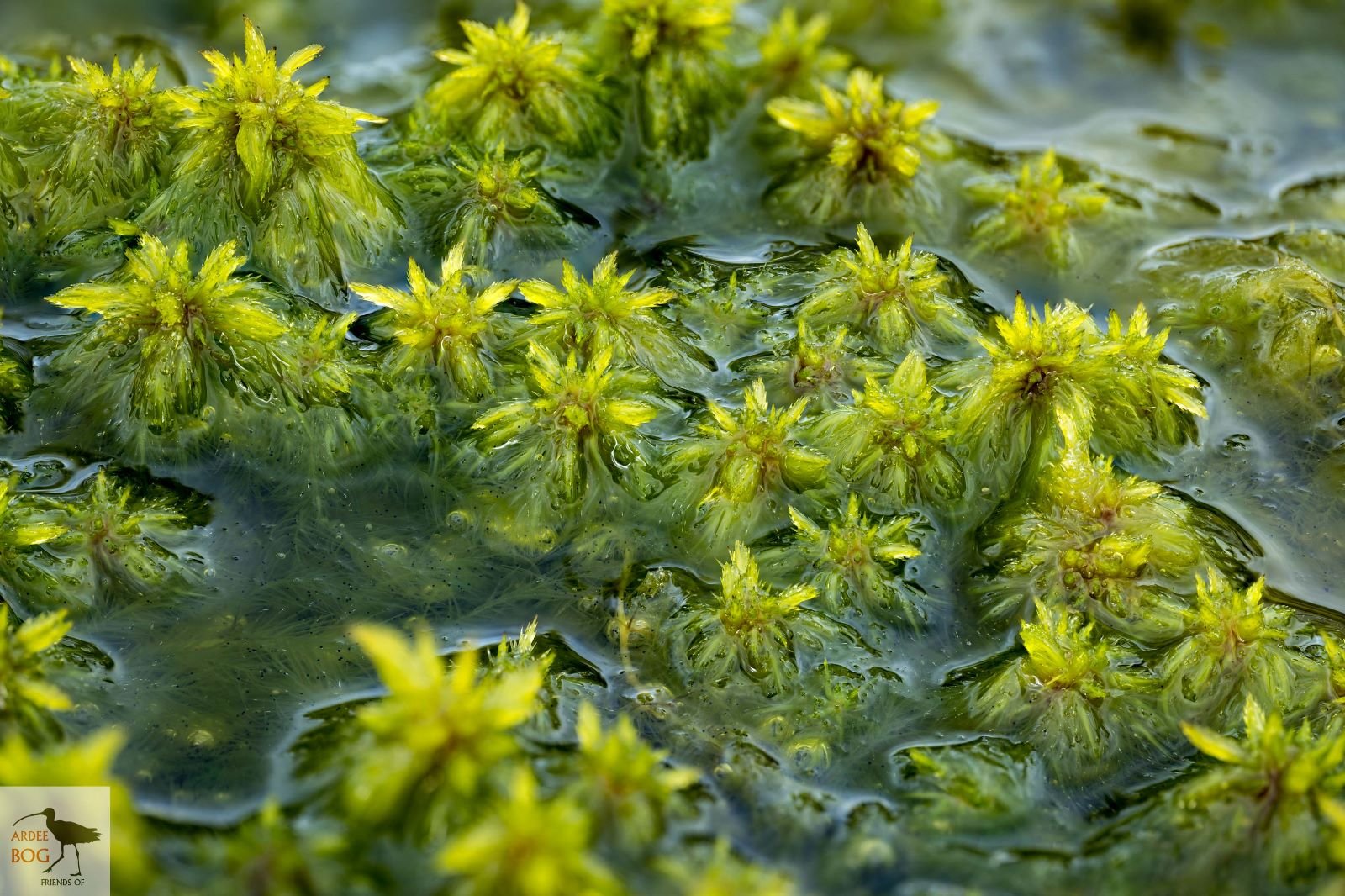
The story of Ardee Bog
Ardee Bog is Ireland’s most Easterly Raised Bog.
In Ireland, raised bogs—including Ardee Bog—started to form around 10,000 years ago as the Ice-Age came to an end. As the glaciers which covered Ireland were melting, the ice scratched the landscape creating the depressions which would form into lakes. These lakes filled with glacial melt water and were lined with a chalk marl formed from invertebrates and shells which helped create waterlogged, low oxygen conditions. Any plants which grew and died fell into the lake and did not decompose as there were no worms, bacteria, fungi to break them down. These plant materials built up, trapped under a high water table. As the lake filled with plant material it became a fen, which is a transitional habitat; in-between a lake and raised bog.

This fen became colonised with Sphagnum Moss which is known as the bog builder. Over thousands of years this moss grew and died (forming peat) with new moss growing on top and building up to form the distinctive dome shape which gives raised bogs their name.
Because of this accumulation of peat, raised bogs become important carbon stores. According to the Irish Peatlands Conservation Council,
“In their natural state peatlands act as long-term sinks for atmospheric carbon dioxide. A persistently high water table is necessary for this function. Peatlands are the most important long-term carbon store in the terrestrial biosphere. They sequester and store atmospheric carbon for thousands of years. The peatlands in the northern hemisphere alone store approximately 450 billion tonnes of carbon.”
Irish peatlands represent the largest store of carbon in the Irish landscape. They hold 75% of the soil’s organic carbon — that’s more carbon than is stored by forestry and agriculture, combined. This means that our bogs play a vital role in mitigating the effects of climate change. Remarkably 50% of Europes raised bogs are in Ireland.

Turf extracted from the lowest depths of the peat reveals is chalky, indicating its the peats proximity to the early lakes chalk marl base. Remarkably the peat is full of the small shells of the creatures which would have once lived in the great lake after the end of the Ice Age.
In its fullest extent Ardee Bog was approximately 900 hectares in size and stretched from the town of Ardee in County Louth to Drumcondrath in County Meath. Markers of life at it’s margins through-out human history are visible in the archaeological record (bronze age artefacts, evidence of early Christian activity and ring-forts are all found in the vicinity of the bog) and later Norman settlement at its edges. The bog has been subject to drainage schemes since the 1800’s and has been occupied by people who carved out a living from the land. Ardee town has always had a close relationship with the bog with turf being imported into the town via the River Dee.

A turf house on Ardee Bog is pictured in the book “The Great Bog of Ardee,” by Frank Mitchell and Breda Tuite.
The Irish Peatland Conservation Council undertook surveys of Ardee Bog in 1990 and 1998 and identified a core area for conservation surrounded by a bufferzone of supporting habitat. This area is a proposed National Heritage area (designated pNHA). However, at this present moment in time Louth County Council are proposing to build a link road through this particular part of the Bog (please see our advocacy page for more information). The bog represents an asset of considerable importance for County Louth’s natural and cultural Heritage. In addition, the Great Bog of Ardee features in a landscape study undertaken by the late Professor Frank Mitchell in 1995 and published in the Atlas of the Rural Irish Landscape. Professor Mitchell and Breda Tuite also published a book called “The Great Bog Of Ardee,” a copy of which is held by Friends of Ardee Bog and is available to read online here.

Ardee Bog exists today as a series of fragmented complexes of bog, largely cut to some extent, nestled between stretches of reclaimed farmland. In some places bog pools still exist and are home to a diverse variety of species. Take a look at our biodiversity page to find out about some of the species that call the bog home.
Today a growing number of people, including Friends of Ardee Bog, are working to highlight the bogs importance to the ecological, cultural and social fabric of County Louth. Friends of Ardee Bog are working to restore a small former turf cutting plot in Corstown. To date we have conduced an ecological survey of the plot as well as conducting ongoing surveys into the hydrology of the site. We are also involved in historical research, collecting Oral histories, learning activities and much more. Take a look at our Restoration project page for more information on the results of our survey and the work we are doing at the site.
If you are interested in joining Friends of Ardee Bog, or taking part in the work that we do please clink the link or reach out to find out more.





